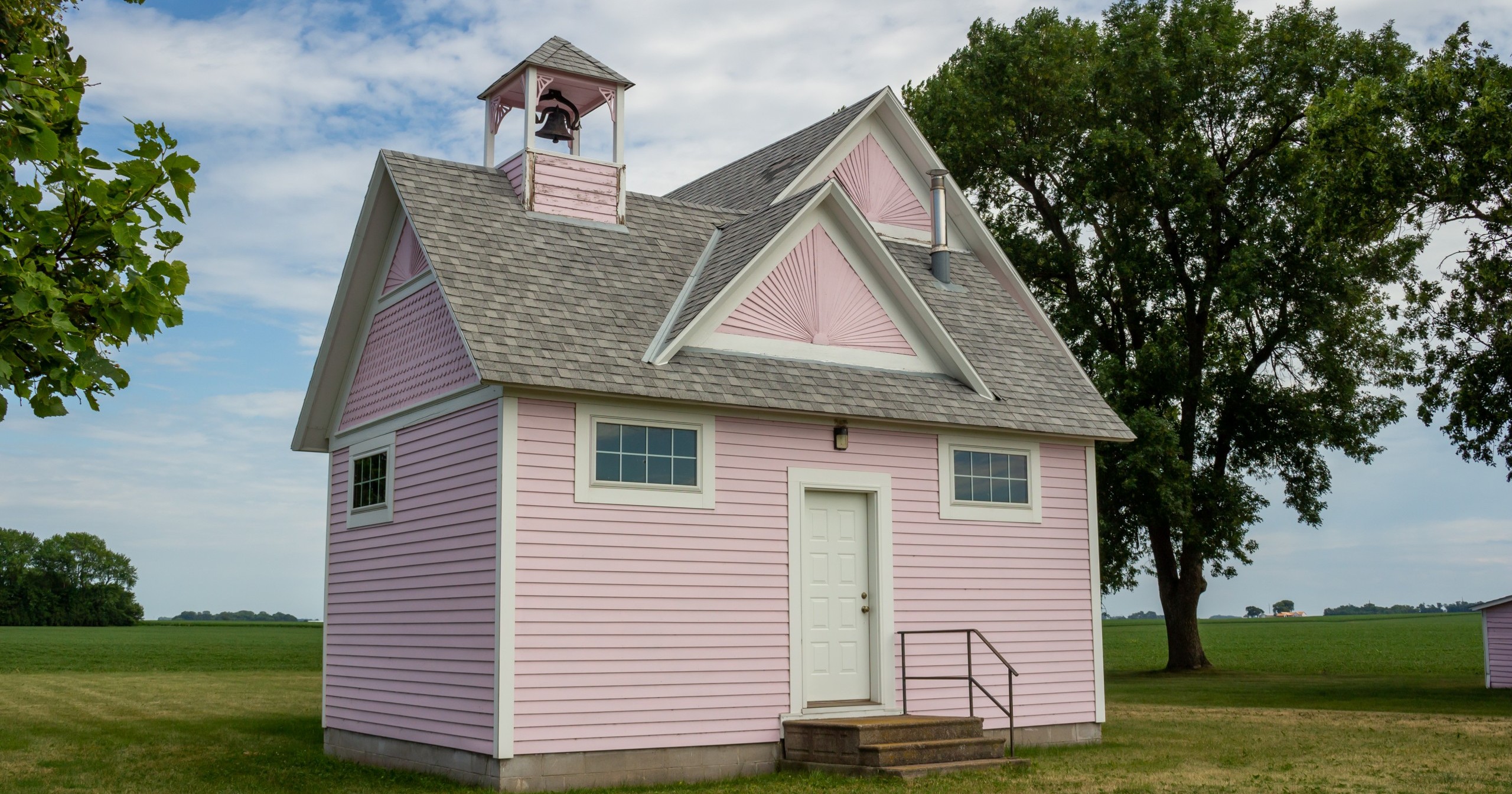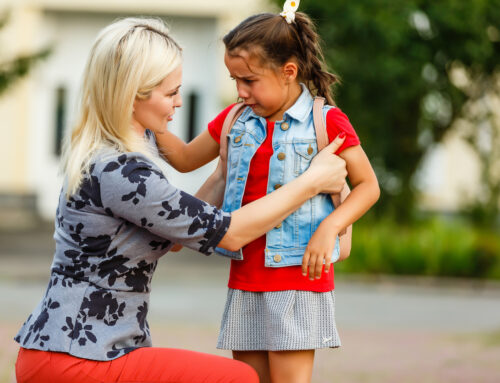
Have you wondered if education could look different? We all know that alternative options exist. Homeschools, charter schools, magnet schools, religious schools, language immersion schools, and the list goes on and on.
But, the bottom line is that these alternatives aren’t everyone’s cup of tea.
Post-Covid, thousands of families have safety concerns regarding bigger schools and large classes. Others discovered from their distance-learning experience that other education models might benefit their families better.
What if there was an option that gave parents peace of mind and offered students a more personalized, intimate educational experience without embracing the lifestyle change of a model like homeschooling?
This option exists.
Knock on the door of your imagination for a moment. Imagine a one-room schoolhouse. What comes to mind? Maybe you see a wood-burning stove, frost on thick panes of window glass, and a dozen little feet shuffling into the room wearing old leather, lace-up boots.
Or maybe you envision hard wooden benches attached to sturdy worn-out desks. Slates and pencils lie neatly side by side. Lunch pails, braids, suspenders, and straw hats fill the tiny log room.
These classic scenes are one version of a one-room schoolhouse, the origins of today’s large, modernized public schools.
But what if a traditional school setting could be reborn in the improved image of its early ancestor? Can children enjoy the unique benefits of this setting without compromising their mental, emotional, and educational well-being?
Many modern educators say yes!
A Happy Medium
According to The Conversation, microschools are “…very small schools that typically serve 10 to 15 students, but sometimes as many as 150…[they] tend to have closer adult-child relationships in which teachers serve as facilitators of student-led learning, not just deliverers of content.”
Microschools are today’s modern version of the one-room schoolhouse of yesteryear. The classes consist of multiple age and grade groups, learning together at the students’ own pace. This is the same concept as the historical model we all think of today.
Often referred to as “outsourced homeschooling,” microschooling can offer students many of the same benefits as homeschooling, but generally includes students from two or more families in the same class. Generally, microschools are led by certified teachers, though not always. This approach is ideal for families who prefer a more intimate, hands-on setting but can’t embrace the homeschooling lifestyle.
According to Microschool Revolution, an innovative resource for jumpstarting microschool communities, “Microschools are the result of rethinking the traditional educational model to better prepare children for the future.” They define microschools as “small, private institutions where students are empowered to personalize their own educations and are held accountable for their own progress.” (To read Microschool Revolution’s complete comparison of microschools to other school models, such as homeschooling, go here.)
An Old Concept
Microschooling itself is not a new concept. In fact, it’s been gaining traction for years. Before the Covid-19 era, microschooling was becoming a popular choice in Arizona, with Prenda as one of the most popular microschooling networks. The Arizona-based founder, Kelly Smith, created his first microschool with seven neighborhood students. His experience grew, and now his company supports over 300 microschools, primarily in his home state.
The general concept is still very similar to the old one-room schoolhouses our great-grandparents experienced, with some modern differences.
Education Next notes Matt Candler’s explanation, examining today’s more modern take. “What makes a modern micro-school different from a 19th century, one-room schoolhouse is that old school schools only had a few ways to teach — certainly no software, no tutors, and probably less structure around student to student learning. In a modern micro-school, there are ways to get good data from each of these venues. And the great micro-school of the future will lean on well-designed software to help adults evaluate where each kid is learning.”
One-room schoolhouses offered a unique, community-based learning environment for children. Class sizes were small, which allowed for a more intimate learning experience. The class was not segregated by age or grade, and students were able to learn from each other, often with older students mentoring younger ones.
Forbes explores some of the advantages of the one-room schoolhouse model, including the mentoring aspect. “Studies have shown that students learn better when they have to teach the material to others. Peer-based and team-based learning has also been found to be quite beneficial…Even 1st grade students providing one another with feedback as part of an iterative educational process yields a profound outcome…”
A New Trend
While microschooling has technically been around for decades, our post-pandemic world has boosted the movement into overdrive. Whether parents are concerned about the health and safety of their kids in crowded schools or if months of at-home learning heightened their appetite for something new, families are flocking to alternative education models.
This phenomenon has caused a stir nationwide. News networks such as Fox News and organizations such as the Independent Women’s Forum have covered the rise of microschools to explain the “new” education alternative.
Taking a closer look at Prenda as a sort of case study, the New York Times examines this phenomenon. “Parents are increasingly turning to microschools…When the pandemic hit, about 700 students were participating in microschools supported by Prenda…by October, that grew to more than 3,000, and the number of microschools jumped to 326 from 126. The company just expanded to Colorado.”
The Covid-19 era has opened a whole new world of educational possibilities to families across the country, and Americans are exploring new schooling horizons like never before. Microschooling is becoming a popular choice that’s here to stay.
Benefits
Every education model has its benefits and drawbacks, and microschooling is no exception. With Covid protocols still prevalent and overcrowding coupled with underfunding a real issue in public schools, microschooling is becoming more and more attractive for many parents. But, it’s not just the parents who are entertaining this idea.
ABC 7 News spoke to one teacher who has chosen to leave the public school setting to begin her own microschool. Hannah Holguin is a math teacher but told the news network that she felt disappointed in her role as a conventional teacher. She worried she wasn’t providing everything her students needed in her current environment.
What was her biggest concern? Holguin believed that conventional public schools aren’t considering students’ emotional well-being, something she hopes to address with her microschooled students.
In Holguin’s opinion, one benefit to microschooling is the one-on-one attention that students can receive, with “guides” (microschooling teachers) able to invest in and meet students where they are.
Another benefit of microschooling relates closely to personalized attention and smaller class sizes. Kids get a more relaxed setting with realistic goals based on their abilities and skills. Adamo Education notes, “One of the largest benefits of micro schools is the ability to customize learning activities and tailor them to each student’s present levels of performance, thus allowing students to master skills and content faster.”
Standardized testing and cookie-cutter expectations in public schools have been debated for years. Despite their widespread use, they’re a controversial approach at best. Microschooling takes education back to a more foundational place, allowing each student to have a personalized educational experience.
The next big plus with microschooling? Maximizing modern technology for the benefit of the students and teachers. Today’s world offers an unbelievably diverse arsenal of teaching and learning tools. Most microschools are owned by the teachers themselves, allowing them the freedom and flexibility to do whatever it takes to help their students succeed. Without standardization, school policy, and administrative leashes, teacher guides can maximize available options.
“Microschools have the unique advantage of being able to incorporate technology without it taking over the whole learning process,” Memorial Private School explains, “They teach kids how to balance their lives and use technology responsibly for research and meaningful connections…Some highly innovative microschools offer a research-based approach to learning to cultivate a growth mindset in their students…They may also base their model on neuroscience and other findings, methods they know will actually work in the classroom.”
Microschooling isn’t the new kid on the block, but it’s new as far as a popular trend is concerned. However, its many benefits are already becoming strikingly evident.
What’s the Downside?
Nearly everything in life has a downside, and microschooling is no exception. What are some of the cons?
One obvious negative is finding a microschool in your area. While they are gaining popularity, microschools certainly aren’t popping up on every corner. Education Weekly offers some insights and a short list of available microschool networks to help guide parents in the right direction.
Can’t find a microschool you like in your area? Think about starting one yourself! Forbes explores this idea through an interview with Joe Conner, the co-founder of SchoolHouse. SchoolHouse helps families establish their own microschools and guides them along the way.
Several “how to” guides for starting your microschool are readily available on the internet, but this one from Edupreneur Academy is an excellent place to start.
For some families, the cost might be an issue. The Conversation estimates that it can cost as low as $4000 or as high as $25,000 to send your child to a local microschool. However, as they also note, there might be financial aid available through school choice funding for some families wanting to explore the microschooling option.
One more potential downside to microschooling is that there is very little data to suggest that the microschool model has a higher success rate in relation to other schooling options. However, there’s also no significant data to indicate that microschooled children do worse than their counterparts in different types of schools. Parents can consider the personalized attention, the smaller class size, and the individualized experience that microschools offer and choose what’s best for their child.
A Modern Take on an Old Solution
The early one-room school house concept met a need for parents and children in the community. Children could gather in a local, small group setting to obtain an education while their parents continued their work uninterrupted by academics.
Homeschooling and private schooling aren’t for everyone, and the recent trend away from the public school setting creates a demand for something more. Today’s microschools can help meet the needs of today’s families.
Education can look different, and it does through microschools. Whether you have one right down the road from you or you feel the need to jumpstart your own, this old-new concept might just be the solution your family is looking for.





[…] was a truly ideal educational experience with the best that a multi-generational academic focus could give! I’ll always be so grateful for my grandparents’ interest in my education, and I […]
[…] The Growth of Microschools […]
[…] was a truly ideal educational experience with the best that a multi-generational academic focus could give! I’ll always be so grateful for my grandparents’ interest in my education, and I […]